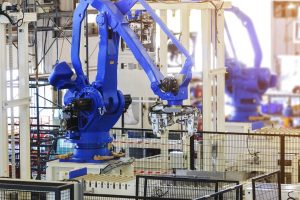When a bottling company wants to ensure that the thousands of bottles it produces daily are filled with just the right about of liquid, contains no unwanted residue, and make sure the bottles aren’t broken, what do they do? They turn to computers to watch for problems. Machine vision technology, which allows computers to see and understand their surroundings is experiencing a dramatic increase in usage.
 Machine vision technology is the wave of the future in various industrial and mechanical applications. For decades, machine vision has demonstrated its ability to inspect, measure, scan, or otherwise identify different products across multiple applications. Because of the increasing affordability of machine vision components and systems, more capable hardware, and smarter Ai-based software algorithms, machine vision is positioned well for substantial growth within the IIoT (Industrial Internet of Things) movement. However, its potential growth in IIoT applications will be connectivity. Once connected to each other, and ultimately the cloud, machine vision systems become unique tools that can draw insight from images and display it for entire factories.
Machine vision technology is the wave of the future in various industrial and mechanical applications. For decades, machine vision has demonstrated its ability to inspect, measure, scan, or otherwise identify different products across multiple applications. Because of the increasing affordability of machine vision components and systems, more capable hardware, and smarter Ai-based software algorithms, machine vision is positioned well for substantial growth within the IIoT (Industrial Internet of Things) movement. However, its potential growth in IIoT applications will be connectivity. Once connected to each other, and ultimately the cloud, machine vision systems become unique tools that can draw insight from images and display it for entire factories.
Examples of the uses of machine vision include:
- Electronic component analysis
- Signature identification/handwriting recognition
- Optical character recognition
- Object and pattern recognition
- Materials inspection
- Currency inspection
- Medical image analysis
The automotive industry is one place where machine vision technology is forging ahead. Automobile manufacturers receive critical sub-assemblies from outside Tier 1 suppliers. Prior to installation on a vehicle, each sub-assembly must be inspected to ensure it meets the quality requirements demanded by the manufacturer. In times past, such inspections were performed manually, but, over the past twenty years, more and more automobile manufacturers have incorporated vision systems to automate the task.
Not only are auto manufacturers using the technology in the assembly lines, but also on vehicles themselves. Park assist, blind spot notifications and rear back-up cameras all use machine vision technology.
In a recent article, it was noted how auto manufacturers incorporate machine vision when applying adhesives in the assembly of vehicles. Adhesives can reduce the number of manufacturing processes, such as drilling and installing fasteners. Also, eliminating drilling or altering parts for fasteners keeps warranties from being voided.
With the decreasing size of pixels in today’s high-performance cameras, the choice of correct lighting and optics is more critical than ever. Because of this continual reduction in pixel size, the achievable system resolution will often be limited by the lens and not the camera’s sensor, making it more important to correctly select a lens early in a system development. With that in mind, employing Universe Optics is the right choice. Our team of engineers and manufacturers work together to ensure the highest quality precision lens for your application.
The U.S. is not alone when it comes to using machine vision. The worldwide robotics industry is expected to see a growth rate of more than 10% annually over the next five years. Markets like the U.S., China, and Mexico are key areas of increasing automation investment. Enabling technologies like machine vision technology, motors, and motion controllers are also expected to be in high demand as manufacturers look to fully outfit their smart factories.